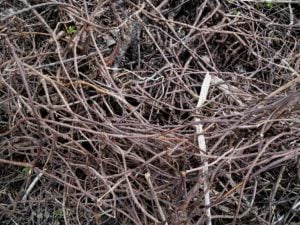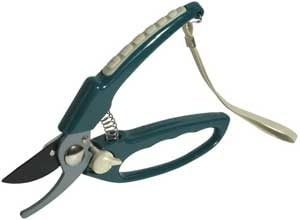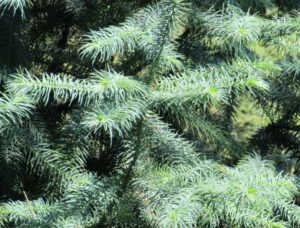
Who did not think about the creation in his country hedge very beautiful element for fencing the boundaries of the site, the division of zones within it? In contrast to the flower beds, which vary from time of year, the desires of the owners, good-quality hedge is durable and permanent.
Once created, it can perform several functions on the site, one of which is protective. Due to the dense location of plants in planting, forming, hedge perfectly copes with this task, securely sheltering from prying eyes of the owners and the entire property as a whole. Properly laid, impassable for humans and animals, hedge – beautiful, inexpensive, and sometimes the only long-term replacement for various types of fences. In addition, it delays snow, protects the site from wind, dust, gases, noise, thereby performing a sanitary and hygienic function. Hedge often becomes a safe haven for feathered friends cottages, where they build their nests, hatch Chicks.

Depending on the plants used in the creation of hedges, it can decorate fences, outbuildings, divide the territory into functional zones, create lines, volumes, shapes, emphasize or complement flower beds, lawns. In addition, the hedge can carry honey, food, medicinal and technical purposes.

Having defined the functions of the hedge, let’s look at its types. In form distinguish molded (sheared) and free-growing hedges. The first are comparable with a frame for a picture, to be exact with the accurate geometrical lines giving to giving and its separate parts full completeness. At the same time, if you frame the cropped borders straight paths, laid across the entire site, it increases the impression of elongation, and, conversely, rounded lines and shapes will create an optical equilibrium with an elongated contour.

As a rule, for the molded hedges are selected shrubs, well amenable to cutting, forming a dense crown, giving abundant branching and foliage. This hedge perfectly performs a protective function and with age becomes impassable, does not miss the extra looks, creates calm and privacy inside the cottage; it can be used in the design of children’s corner. A distinctive feature of the molded fence is its compactness: the width of the site it takes up little space and is therefore ideal for a small cottage.

Depending on the method of forming plants hedge can have different profiles: rectangular, triangular, trapezoidal, obovate, ovoid.
- A rectangular hedge is created using shade-tolerant tree species (taxus, hornbeam). More light-loving species in this profile are often exposed from below.
- Trapezoidal hedge with a bevel of at least 10° passes enough light in the lower part, so it is optimal for many plants.
- Universal is a triangular hedge with a slope of the sides at an angle of 70-80°.
- A rounded hedge requires a large area and cutting experience; with the rounded tops of the hedge profile, the softness of its shape is created.

Well manicured hedges admires the regularity of the lines, causing the Association with the luxurious decoration of the old estates, parks and gardens. Planted even near a small dacha, it will give it a special respectability with its accuracy.

If there is enough space in the country, you can arrange a freely growing hedge. At the same time, its width can vary significantly from 0.7 to 3 or more meters.

Free-growing hedges are mostly created from breeds that do not tolerate cutting, abundantly and beautifully flowering, as well as plants with natural compact narrow-pyramidal, columnar crowns. As a rule, these are very decorative plants, and the linear plantings created from them are able to decorate any dacha, giving it a solemn look. But in order that such fence coped with protective function and were not looked through, do it usually two – or multi-row (depending on availability of a place). At the same time, plants are selected according to the color of the leaves, flowers, flowering time, creating a whole palette of colors or maintaining some specific, favorite range.
Free-growing hedge does not need regular forming pruning and this is its great advantage. Once a year (to stimulate flowering) is a light brightening pruning of flowering shrubs.

The height of the hedge is: border (up to 1 m), actually hedge (1-2 (3) m), living wall (more than 3 m).
Most often, the curb is formed of low-growing densely branched, small-leaved, slow-growing shrubs. It has ornamental value and is cultivated along paths, borders, terraces and lawns, edging low stairs, kit flower beds. The border can be molded and freely growing.

In addition to decorative, protective and sanitary-hygienic value is actually a hedge. In the country it is usually located not only on the border of the site, but also inside it; it may not be too dense. Lay it from the shade-tolerant rocks with a relatively slow growth, dense branching and densely sitting on the shoots of medium-sized leaves.

The living wall serves not only as a volumetric architectural and artistic design of the cottage, but also its protective function from the wind is great, and its sanitary and hygienic value is higher than that of low and medium fences. As a rule, it is planted along the borders of the cottage and much less often inside it. The crowns of plants for the living wall are molded by lateral and apical shearing with alignment throughout their common cross-section. The best breeds for a live wall are shade-tolerant types with medium-sized leaves, a dense arrangement of shoots and leaves, rather slowly growing.

If we consider hedges on the complexity of the device, the simplest is a single – row hedge, which is laid out of densely branched shrubs, located independently or along the fences of non-living material; plants are planted tightly. It is followed by a two-rowhedge, which is often arranged from free-growing trees and shrubs with not very dense crown. In the presence of a place in the country, planting material, the need for the device, lay a three-row hedge; in such a fence can be used multi-level planting, which look especially decorative.

Most often, a hedge arrange from one breed (homogeneous hedge) in a row, but sometimes planted a combined hedge of 2-3 or more species in a free-growing and multi-level planting. In such fences may be a combination of non-prickly plants with prickly, which greatly increases the protective function of planting, and when combined with contrasting properties of rocks increases its decorative.

Of shrubs with different flowering periods, you can arrange a combination of a hedge. For example, Buddha, dogwood, bobovnik, elderberry, lilac, decorative Apple trees form an impenetrable wall, decorating it first with flowers and then with fruits. If necessary, the combined hedge can be supplemented with vines. It is especially convenient to use this technique on the boundaries of the site with a partial fence or the use of supports. This construction noticeably quicken visually widen the space.
The combined free-growing hedge is quite popular in France. At the same time, plants of different heights are used, the highest being located in the middle or at the corners of the hedge; they combine flowering rocks with decorative foliage, especially with foliage of different shades. These fences are good next to the lawns, when decorating buildings.

At the device of the impassable hedges occupying a narrow strip on a country site use trellises. Naturally interwoven tapestry hedges are a single row planting of the cross in the weave of inclined trunks bore. For greater strength, they are attached to a wooden lattice, which is eventually removed, and subjected to a molded haircut in the form of a narrow wall. For greater strength, intertwined shoots of plants in the places of their contact can be artificially spliced by grafting rapprochement, which will require a lot of time, work, but will form perfect trellis and artificially intertwined hedges.

Most often, the hedge is arranged in the form of straight lines delineating certain boundaries, but it can create a circular framing of flower beds, semicircular niches for benches or garden sculpture, wavy or flat surfaces, decorated with balls, cones, pyramids, green steps, images of animals. Thanks to topiary art it is possible to embody the most improbable and original imaginations in various figured hedges. Today, this ancient form of skill curly hedge cutting again in demand and extremely popular.

With age, some trees and shrubs with weak branching shoots quickly bare from the bottom, so the usual shaping crown haircut they are unsuitable for hedges. However, with annual cutting on the stump, they give a fast-growing, strong, well-leafy until late autumn and very decorative annual shoots. The result is a very beautiful hedges-edges that are important as decoration and technical use, but not protection.
It is quite obvious that for the device of a sound hedge requires a certain period of time, so in its absence resort to a portable hedge. In this case, a permanent place in the country is planted not individual plants, which then need to be formed, but a completely ready hedge, grown and already formed in the nursery. When planting such a fence, it is necessary to limit the growth of roots in the soil by artificial obstacles: tightly adjacent bricks, stones, polyethylene film, so that later, with a new transplant of the fence, the root system of the plants is preserved as much as possible. In this case, well-intertwined plants are tied to two poles in the lower and middle part and thus transfer the plants dug separately to a new planting site.
Currently, modern garden design is characterized by a wide variety of forms, unusual combinations of materials and original colors, so the hedge, combined with wooden, metal, stone fences is particularly relevant for decorating various fences, which now often reach the size of the protective walls of ancient fortresses. When using different plants inanimate hedges seem to “come to life”. It is important that the fence is in harmony with the style of the entire suburban area. For example, for giving in the country style are good wooden Palisades, fences, fences in the style of ranches and so-called hunting fences. For suburban garden more suitable Board fence or fence, which looks more strictly. Cast iron fences, from which emanates aristocratic elegance, more appropriate in combination with the architectural diversity of old and modern mansions, the designation of the site. They do not need a dense green coating, and the perfect decoration in this case can be a variety of roses.

In recent years, especially popular fencing of various types of natural stone or concrete. These walls are decorated with plants to varying degrees, in order to be seen, and not closed their beauty. For these purposes, it is good to use self-priming vines that can independently climb rough surfaces. Such retaining walls with terraces easily decorate the top with planting plants with decumbent branches. When using a special range of rock plants such low retaining walls used to strengthen the slopes, terraces, can be turned into flower.

Large tree vines, tall shrubs and trees will be a great addition to the decor of massive fences. Thus it is necessary to consider ability of fencings to pass light, to be heated and to give heat therefore near continuous concrete, stone, metal fences it is necessary to plant tree-Bush breeds at the distance sufficient for their normal development (not less than 1 m).
For decorating light fences, such as a fence or fence, it is convenient to use vines with a small vegetative mass, which this fence is able to withstand. These requirements are best met by vines-annuals. For decorating wooden fences are perfect not only flowering shrubs, but also tall herbaceous perennials and annuals.

But sometimes you need to think about fencing, not only the long perimeters, for example, the external borders of the cottages, but also hedges for small structures, garden chamber Seating areas, flower beds, etc. For this purpose, different arches, arbors, tunnels.
The simplest construction is a lattice, usually it consists of crossed wooden planks about 3 cm wide. The grating is buried in the ground to a depth sufficient for stability.
From several lattices it is possible to make a garden screen. With the help of screens, entwined with plants, you can divide the area into zones, fence off a secluded corner for sunbathing or relaxing, make a green barrier for the curious eyes of neighbors and passers-by, close the space from the wind and change the direction of air flow, protect and insulate the place for heat-loving plants.
In the southern regions are particularly popular pergolas-flat canopies on stone or wooden supports. They like to use to decorate the entrance to the house, design a corner of the rest for the whole family or Playground, which can be used even on hot hot days. Pergola perfectly cope with the role of a green room in the patio. In anticipation of a tightening herbs lianas total designated amount, you can temporarily pull the awning or to hang the curtains, turning the pergola into the tent shamahanskaya Queen.

In addition, among the garden devices, decorated with vines, remarkable arches, consisting of arcuate one-three – row frames and tunnels-multi-row frames such as arches, which are installed at the entrance to the boundaries of the site or in the transition from one area of the cottage to another.

Depending on the life expectancy of the leaf on the plant distinguish evergreen and deciduous hedge. The most important decorative element of garden design in the southern regions is the evergreen hedge. These hedges enliven the cottage throughout the year, but that is especially valuable – from late autumn to early spring, when dropping leaves, dormant other trees and shrubs, empty flower beds.
Evergreen hedge-a great background for flower plants, because the color of flowers on the background of dark green foliage or needles becomes even more expressive. Additionally, dense evergreen hedge, good for snow detention and the weakening of the winter winds.

Deciduous hedge, in contrast to the evergreen, decorative only in the period of foliage. After the leaf fall, it becomes exposed, visible, purged, and its protective function is reduced. To deciduous hedges, continued to play the role of impassable fences, use of barbed trees and shrubs or apply a forming densely branched species.
To winter she did not seem naked, it is decorated with evergreen plants. The latter are placed in the foreground as a lining, which simultaneously closes the lower part of the fence at the bottom of the rapidly bared species, or in the background to increase the height of the fence. The value of the deciduous fence is that it is arranged from plants, most of which are flowering, fruit, honey, medicinal and can be widely used not only as fences.
Colorful hedge. Due to the fact that the hedges are compacted and elongated plantings, they are able to create defining and background accents in the garden, thanks to the richness of color flowers (flowering hedges) and leaves (ornamental hedges).

But whatever type of fence you choose for your summer house, remember that the hedge is beautiful, fashionable, comfortable, elegant. Do not be afraid to saturate even the smallest suburban area hedges. Approach creatively to the use of this element in the country. Vary the height, shape, color and range of plants. The combination in fences of various geometrical forms (pyramids, spheres, figures of animals, letters, and even the cut-out names of owners) will allow to leave from strict regularity, will give to your giving unique original shape, impression of grooming, care and love to the house, the family, the favourite giving.




Leave a Reply